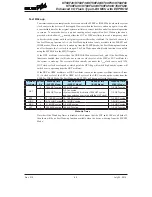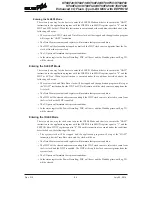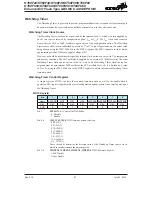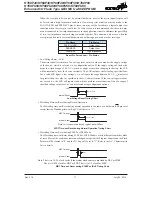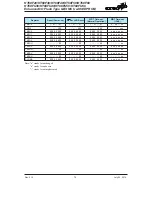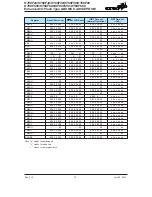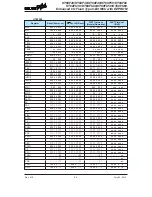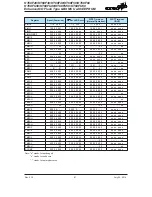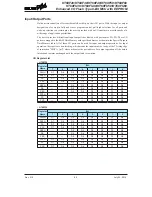
Rev. 2.10
68
���� 02� 201�
Rev. 2.10
69
���� 02� 201�
HT68F20/HT68F30/HT68F40/HT68F50/HT68F60
HT68FU30/HT68FU40/HT68FU50/HT68FU60
Enhanced I/O Flash Type 8-Bit MCU with EEPROM
HT68F20/HT68F30/HT68F40/HT68F50/HT68F60
HT68FU30/HT68FU40/HT68FU50/HT68FU60
Enhanced I/O Flash Type 8-Bit MCU with EEPROM
Watchdog Timer Operation
The Watchdog Timer operates by providing a device reset when its timer overflows. This means
that in the application program and during normal operation the user has to strategically clear the
Watchdog Timer before it overflows to prevent the Watchdog Timer from executing a reset. This is
done using the clear watchdog instructions. If the program malfunctions for whatever reason, jumps
to an unkown location, or enters an endless loop, these clear instructions will not be executed in the
correct manner, in which case the Watchdog Timer will overflow and reset the device. Some of the
Watchdog Timer options, such as enable/disable, clock source selection and clear instruction type
are selected using configuration options. In addition to a configuration option to enable/disable the
Watchdog Timer, there are also four bits, WDTEN3~WDTEN0, in the WDTC register to offer an
additional enable/disable control of the Watchdog Timer. To disable the Watchdog Timer, as well
as the configuration option being set to disable, the WDTEN3~WDTEN0 bits must also be set to
a specific value of "1010". Any other values for these bits will keep theWatchdog Timer enabled,
irrespective of the configuration enable/disable setting. After power on these bits will have the value
of 1010. If theWatchdog Timer is used it is recommended that they are set to a value of 0101 for
maximum noise immunity. Note that if the Watchdog Timer has been disabled, then any instruction
relating to its operation will result in no operation.
WDT Configuration Option
WDTEN3~WDTEN0 Bits
WDT
WDT Enab�e
××××
Enab�e
WDT Disab�e
Except 1010
Enab�e
WDT Disab�e
1010
Disab�e
Watchdog Timer Enable/Disable Control
Under normal program operation, a Watchdog Timer time-out will initialise a device reset and set
the status bit TO. However, if the system is in the SLEEP or IDLE Mode, when a Watchdog Timer
time-out occurs, the TO bit in the status register will be set and only the Program Counter and Stack
Pointer will be reset. Three methods can be adopted to clear the contents of the Watchdog Timer.
The first is an external hardware reset, which means a low level on the RES pin, the second is using
the Watchdog Timer software clear instructions and the third is via a HALT instruction.
There are two methods of using software instructions to clear theWatchdog Timer, one of which
must be chosen by configuration option. The first option is to use the single "CLR WDT" instruction
while the second is to use the two commands "CLR WDT1" and "CLR WDT2". For the first option,
a simple execution of "CLR WDT" will clear the WDT while for the second option, both "CLR
WDT1" and "CLR WDT2" must both be executed alternately to successfully clear the Watchdog
Timer. Note that for this second option, if "CLR WDT1" is used to clear the Watchdog Timer,
successive executions of this instruction will have no effect, only the execution of a "CLR WDT2"
instruction will clear the Watchdog Timer. Similarly after the "CLR WDT2" instruction has been
executed, only a successive "CLR WDT1" instruction can clear the Watchdog Timer.
The maximum time out period is when the 2
15
division ratio is selected. As an example, with a
32.768kHz LXT oscillator as its source clock, this will give a maximum watchdog period of around
1 second for the 2
15
division ratio, and a minimum timeout of 7.8ms for the 2
8
division ration. If the
f
SYS
/4 clock is used as the Watchdog Timer clock source, it should be noted that when the system
enters the SLEEP or IDLE0 Mode, then the instruction clock is stopped and the Watchdog Timer
may lose its protecting purposes. For systems that operate in noisy environments, using the f
SUB
clock source is strongly recommended.







